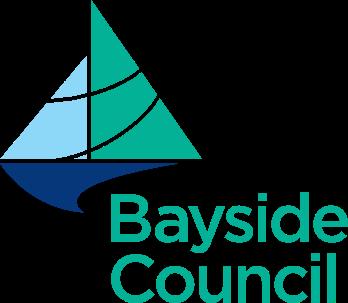


Acknowledgement of Country Bayside Council acknowledges the Bidjigal Clan, the traditional owners of the land on which we meet and work and acknowledges the Gadigal people of the Eora Nation. Bayside Council pays respects to Elders past and present.




Acknowledgement of Country Bayside Council acknowledges the Bidjigal Clan, the traditional owners of the land on which we meet and work and acknowledges the Gadigal people of the Eora Nation. Bayside Council pays respects to Elders past and present.
Council manages over 15,149 stormwater drainage assets worth circa $234 million that benefit our community. The stormwater assets play an important role in managing runoff in our urban environments and ensure runoff is managed on roads so they are safe and usable, overland flow does not impact or damage private property or Council assets, and flooding is managed so the Bayside area remains as safe as possible. The Bayside population will continue to increase through increased development density. This, in combination with increased rainfall intensity (as a result of climate change) and as our existing infrastructure ages, the demand for new infrastructure will rise to address these needs. Council’s key role in the provision of stormwater drainage assets is to ensure sound management of Council’s Stormwater drainage systems.
The Asset Management Strategy is the overarching document that identifies assets that are critical to Council’s operations and outlines risk management strategies for these assets. It includes specific actions required to improve Council’s asset management capability and projected resource requirements and timeframes
Asset Management Plan - Transport
Asset Management Plan - Stormwater
Management Strategy

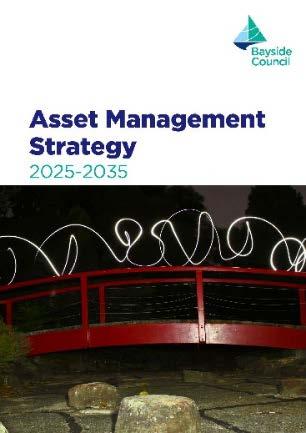
Asset Management Plan - Property
Asset Management Plan - Open Space
This Asset Management Plan (AMP) outlines Bayside Council’s (Council) commitment to best practice asset management and supports informed investment decisions. It provides a framework for managing public assets sustainably to meet both current and future community needs.
The AMP details how Council balances capital and maintenance needs, manages growth, and delivers services that meet community expectations. It also covers asset management, regulatory compliance, and funding needs to maintain service levels.
The AMP aims to support evidence-based decision-making, improve community and Council engagement, and connect asset costs with service levels. By addressing challenges and risks, the AMP ensures better use of assets and more informed community involvement. This AMP provides expenditure forecasts that will guide Council’s future maintenance, renewal programs, and capital projects, impacting long-term financial planning and annual budget
Located in the heart of Sydney, Bayside stretches over 29 suburbs including Bexley, Kingsgrove, and Carlton in the west; Banksmeadow, Hillsdale, Pagewood, Daceyville and Rosebery in the east; Wolli Creek and Turrella in the north; plus Rockdale, Mascot, Botany, Sydney Airport and Port Botany down to the coastal communities of Brighton Le Sands, Ramsgate, Dolls Point and Sandringham in the south.
We are very proud of our local area and all that it offers. With our many parks, sporting facilities and picturesque foreshore, as we surround Botany Bay (Kamay) with 8 kilometres of beach and parkland, we believe that Bayside is truly one of the best places to live in Sydney
Our significant wetlands provide important corridors for native flora and fauna, as well as places for our community to engage with natural surroundings
Bayside is well served with public transport with two main train lines and several busy bus routes. There are many great schools, boutique businesses, active laneways and precincts and a very vibrant mix of cultures.
Central to the area is the logistics core of NSW. Bayside has two major international transport hubs, the Sydney Kingsford Smith Airport in Mascot and Port Botany, the largest container port in NSW. These areas are significant as they enable people and products to travel around the world and to come to Australia. Goods arriving at our ports are transported right around the country and Sydney is the busiest airport in Australia. Our local economy will mature as innovation and growth takes advantage of these opportunities.
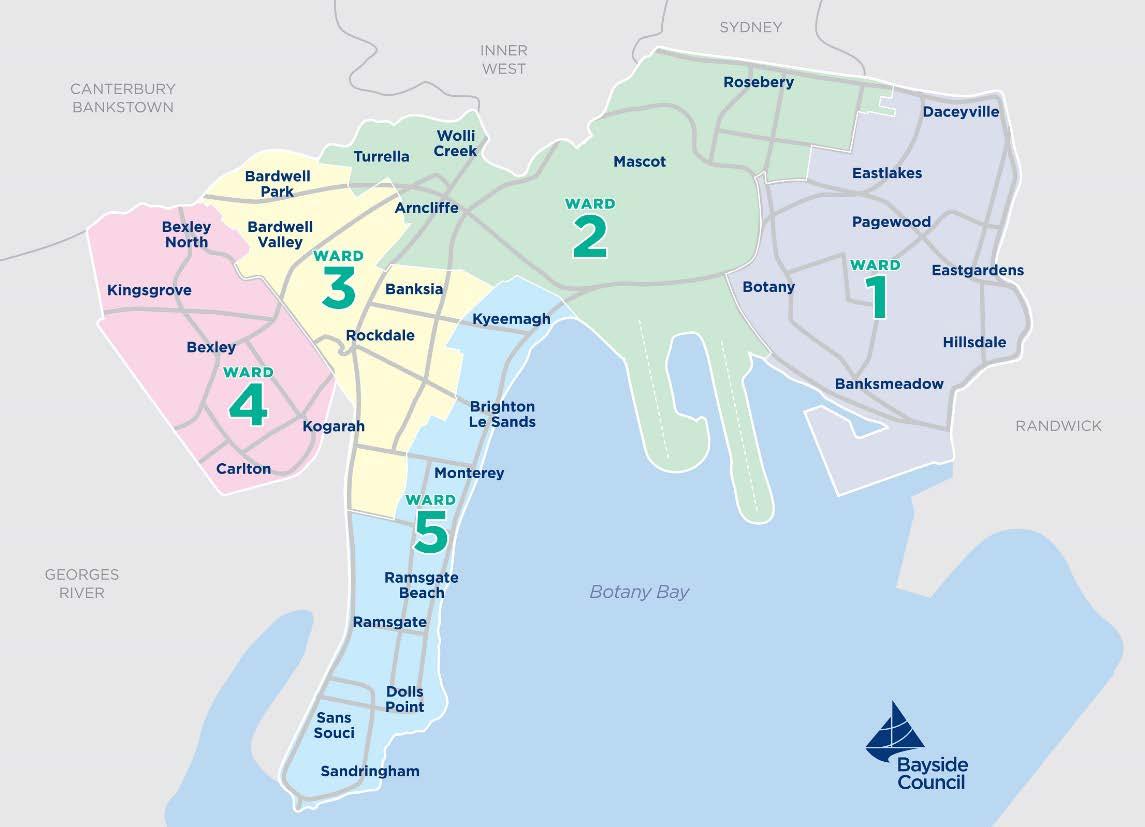
Almost 183,000 residents live in Bayside and this is expected to increase by 30,000 by 2036. Bayside is home to a diverse community hailing from Australia and all over the world. People of all ages enjoy life in Bayside, many speak a language other than English at home and almost half were born overseas.
First Nations people have lived on the shores of Botany Bay (Kamay) for tens of thousands of years
All of these different cultures enrich our area with their traditions, celebrations and stories.
Following are some statistics that demonstrate that diversity.
People & Households
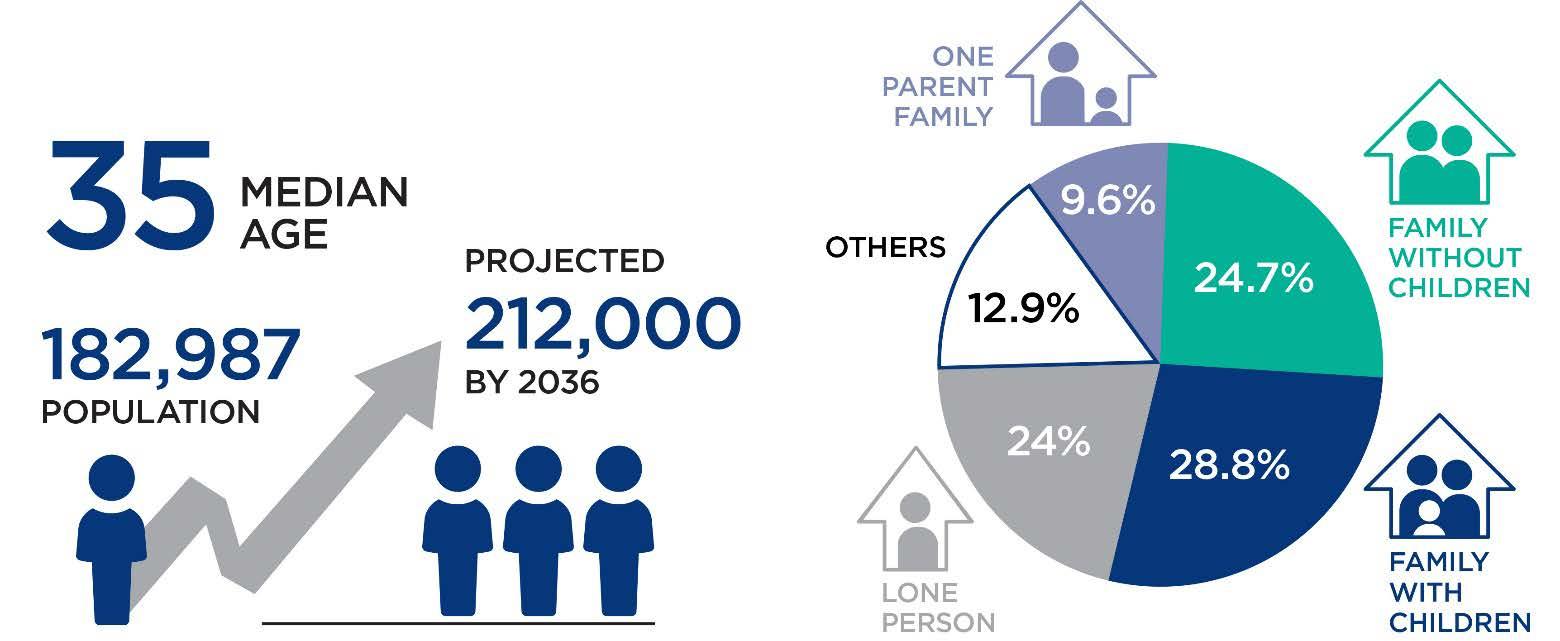
Living & Lifestyle


In 2036 we will be

Source Profile ID, Australian Bureau of Statistics 2021 Census, Household Travel Survey 2019
The value of stormwater assets covered by this Asset Management Plan (AMP) are estimated at $192.4 million as at 30 June 2024 and are summarised in the figure below:
The figures below show the overall health of Council’s stormwater drainage assets by asset hierarchy.
Asset Funding Levels
Presently, there are plans to spend approximately $10 million in capital renewal over the following 10 years to renew Council’s stormwater drainage assets and these have been documented in Council’s current 10 year Long-Term Financial Plan. The budgeted funding is:
Capital Renewal: $25 million over 10 years; or $2.5 million on average per annum; and
Operations and Maintenance: $8 million over 10 years or $0.8 million on average per annum.
New stormwater drainage assets and upgraded facilities: $22 million over the next 10 years
Further funding details are provided in the forecast funding Section. It is envisaged the financial projections will be continually monitored and improved as part of the ongoing management of the stormwater drainage portfolio.
Ageing Infrastructure Asset Base
Balancing community service level expectations against available budgets and affordability
Population growth and demographic shift
Ensuring Assets are utilised, fit for purpose and sustainable
Reliable and good quality asset information
The anticipated available funding for Stormwater Assets projected over 10 years is provided in Figure 6 below. Council plans to invest significant funds in the upgrading of Spring Street Drainage in 2029
2024
Council’s strategies and plans are developed to set the standards and direction for the services and outcomes we deliver. The supporting strategies and plans are crucial in addressing specific issues and/or details on how we are managing important areas of Bayside.
The Stormwater Assets controlled by Council are utilised by a broad cross-section of businesses, commuters and the local community. It is critical that assets are maintained and renewed based on needs identified for and by its users and stakeholders. Asset users are key stakeholders of this Plan.
Table 1 identifies stakeholders where consultation is necessary when Council seeks input in relation to the determination of Levels of Service and intervention levels relevant to this AMP.
Elected Council (Councillors)
Executive Team (General Manager and Directors)
Councillors represent the community to ensure needs and concerns are addressed to enable transparent service levels through adoption of the Asset Management Framework (Asset Management Strategy, Asset Management Policy and Asset Management Plans). Setting strategic direction as per the Community Strategic Plan, Delivery Program and other strategic documents and ensuring Council is financially sustainable.
Ensure that the Asset Management Policy and Strategy are implemented as adopted, and that Asset Management outcomes support Council's Community Strategic Plan and Delivery Program. To ensure that the organisation is financially sustainable, and funds are invested appropriately to deliver community objectives and sustain assets for the services they deliver. To allocate resources to meet Asset Management objectives in providing services while managing risks. Ensure Council decisions are informed by multiple service level/cost/funding model data, risks, information and knowledge on trade-offs for economic, social, cultural and environmental benefits
Strategic Asset Management Committee (SAMC)
Strategic Planning Business Unit
Ensure all asset management activities are consistent with the Community Strategic Plan, Delivery Program, Long-Term Financial Plan and Asset Management Strategy and Policy. Monitor and review the ongoing operation (and improvements to) Asset Management activities, in line with Asset Management Plans.
Responsible to prepare and perform strategic predictive analysis works to inform Council’s Long-Term Financial Plans and Capital Works Program. Develop long-term strategies to guide the future growth and development of the local government area, including developing the contribution plans. Engage in negotiations to secure Planning Agreements that benefit the community, including the acquisition of contributed assets. Ensure third party contributed assets are reported and submitted for capitalisation.
City Infrastructure Business Unit
Responsible for the overall management of the assets from planning, design, maintenance, capital works and monitoring. Also the maintenance of the asset register, arranging condition inspections and asset revaluations and using this information to identify and plan for renewals. Capitalise new assets and develop and implement Asset Management Plans, policies, and strategies to guide the planning, maintenance, and operation of infrastructure assets to achieve the levels of service being required from utilisation of the assets. Provide accurate advice, analysis, and reporting to Asset Users, Operations Teams, and Service Providers to support decision-making, manage risks, and inform asset performance. Audit, monitor, and assess asset condition to ensure compliance with legislation and asset management frameworks. Develop funding strategies and budgets in collaboration with Finance and apply predictive modelling to optimise asset expenditure. Oversee asset capitalisation, maintain asset data integrity, and ensure compliance with financial regulations.
City Works Business Unit
City Projects Business Unit
Environment & Resilience Business Unit
Finance Business Unit
Operational and Maintenance tasks related to stormwater and drainage Assets to meet agreed levels of service. Delivery of minor asset renewal projects that do not involve complex design input. Responsible for the delivery of asset maintenance programs based on the required service levels of agreement and prepared on the Asset Management Plans. Capture and record work orders undertaken on assets for record management purposes, document and supply required data for asset capitalisation.
Oversee and manage design, construction, procurement, and project management processes for asset creation and renewal projects. Develop a capital works prioritisation program, and coordinate design briefs to complete the capital works program.
Provide input and advice in environmental matters relating to stormwater management, such as required environmental approvals for maintenance of open drains and creeks. Manage stormwater quality assets
Ensure asset valuations are accurate and develop supporting policies, such as depreciation. Prepare asset sustainability and financial reports, incorporating asset depreciation in compliance with current Australian accounting standards. Report accurately on the status of Council’s infrastructure assets in line with standards and statutory requirements. Collaborate with City Infrastructure to establish best practice procedures for asset service delivery and reporting. Coordinate asset accounting deliverables and initiatives with the asset management team. Prepare the Long-Term Financial Plan and Annual Budget.
Information Technology Business Unit
Internal Auditors
External Stakeholders
Ensure configuration, operation integration and enhancements of the Asset Management Information System aligns with requirements and supports asset tracking, maintenance scheduling, and data analysis, To ensure that the relevant IT systems are functioning and that any data within the systems are secure, and its integrity is not compromised.
Ensure that appropriate policy practices are carried out and to advise and assist in improvements
Community General users of the stormwater drainage network. Participate in community engagement to determine acceptable levels of services. Provide feedback on services, projects and policies related to infrastructure asset management.
Maintenance Personnel (contractors)
Utility Service Providers
Ensure provision of the agreed level of maintenance services for assets.
Agencies that provide utility services such as electricity, gas, water, sewerage, and telecommunications. Service providers are consulted where works on Council assets may impact their assets.
Sydney Water operate and maintain sections of the stormwater network, including trunk drainage lines to which Council stormwater assets drains
Landowners Council requires approval for conducting works on land owned by other stakeholders eg Sydney Water, Transport for NSW and other agencies.
State & Federal Government Departments
Council’s Insurer
Periodic provision of advice, instruction, and support funding to assist with Council’s floodplain management responsibilities.
State government agencies own, operate, and maintain stormwater assets in the corridor of state managed roads
Insurance and risk management issues.
This AMP has been prepared to demonstrate proactive and responsive management of assets (and services provided from assets), compliance with regulatory requirements, and to communicate funding required to provide the defined levels of service.
Council’s Asset Management Policy guides the management of Council’s assets with a vison to be ‘recognised as a model of excellence and innovation in delivering services to the community through efficient, sustainable, and responsible management of the assets’.
The AMP is to be read in conjunction with Council’s Asset Management Policy, Asset Management Strategy, and the following associated planning documents:
Community Strategic Plan
Resourcing Strategy
Delivery Program / Operational Plan
Over the next ten years we will work towards achieving the community outcomes identified in the Community Strategic Plan (CSP). The CSP is divided into four themes:
Theme One: In 2035 Bayside will be a vibrant and liveable place
Theme Two: In 2035 our Bayside community will be connected and feel that they belong
Theme Three: In 2035 Bayside will be green, resilient and sustainable
Theme Four: In 2035 Bayside will be financially sustainable and support a dynamic local economy.
This AMP is prepared and aligned with Council’s vision, mission, goals and objectives and has been aligned to deliver cost - effective, transparent, realistic and affordable service levels in accordance with community expectations. Relevant Community Outcomes from the CSP and how these are addressed in this Transport AMP are detailed in the table below: Council’s Goals and how these are addressed in this Plan
CSP Community Outcome CSP Strategy
How they are addressed in this AMP
Theme One: In 2035 Bayside will be a vibrant and liveable place
1.3 Bayside's places are people focussed
1.3.4 Plan for growth and provide infrastructure that will serve our future population as well as our current needs (Deliver, Partner)
Provide assets to mitigate flooding and stormwater issues and to facilitate an increasing population, ensuring the population at risk is not increased.
Ensure provision of assets are, where possible, multi-use designed and built to accommodate growth, diverse needs, and future flexibility.
Theme Three: In 2035 Bayside will be green, resilient and sustainable
3.1 Bayside is resilient to economic, social, and environmental impacts
3.1.1 Build community capacity and resilience to prepare for, cope with, adapt to and recover from economic, social and environmental impacts (Deliver, Partner, Advocate)
Environmentally sensitive design, renewal and asset acquisition criteria developed in future Service Frameworks.
Incorporating climate factors into future strategic asset modelling to simulate climate impact analysis for decision making.
Progressively upgrade stormwater drainage network to alleviate known high risk flooding issues
Implement recommendations of floodplain risk management plans including flood behaviour modification measures, flood response measures and planning controls to ensure community is prepared for and recovers from flood events.
3.3 Bayside's waterways and green corridors are regenerated and preserved
3.3.4 Recycle and reuse water where possible (Deliver)
Where possible, Council will harvest and utilise recycled water to minimise reliance on potable water. Theme Four: In 2035
4.1 Bayside generates diverse local employment and business opportunities
4.2 Bayside supports a diverse and adaptive business community
4.1.1 Encourage and support improved employment outcomes for First Nations peoples, CALD community members and people living with a disability (Deliver, Partner, Advocate)
4.2.2 Incorporate placemaking, active transport, share-economy infrastructure in streetscape renewals, and initiate shop-local campaigns to support local businesses (Deliver)
Asset Capital and Maintenance Procurement policies support CALD.
4.3 Council is financially sustainable and well-governed
4.3.1 Ensure Council decision making is transparent, and data driven (Deliver)
4.3.5 Manage Council assets (including digital) to meet community expectations within available resources (Deliver)
4.3.6 Manage Council finances for the long-term benefit of the community and to prioritise infrastructure funding commitments (Deliver)
Provision of design for capital works, built assets management, civil and landscape infrastructure planning that provide an opportunity for local procurement, business development, employment, and education
Data collection is core activity and based on revaluation cycle
Levels of service allow Council to better define its service requirements and ensure they are met by new infrastructure developments
Through this Plan, and associated deliberative engagement a range of scenarios have been considered for longterm benefits
Council delivers essential services to the community, many of which depend on a diverse portfolio of stormwater drainage assets Understanding condition, performance, costs, and risks associated with these assets helps us prioritise maintenance and management to meet community needs. Stormwater assets are categorised into 9 classes to address their unique challenges. We assess asset performance in the present and with a long-term view to ensure sustainability and reduce future burdens. Following is the anticipated performance of our stormwater drainage asset portfolio over the next 10 years.




This Plan covers approximately 15,149 stormwater drainage assets which are owned or controlled by Council. A detailed list of all the stormwater drainage assets included in this Plan are recorded in Council’s Asset Register. Other Drainage Assets include flood mitigation devise, stormwater treatment and channels. Part of the drainage network that Bayside manages includes water sensitive urban design (WSUD) assets, and Stormwater Treatment Devices such as GPT’s.
Water Sensitive Urban Design (WSUD) is an approach to urban planning and design that integrates land and water planning and management into urban design. Developers use land and water treatment to capture pollutants through infiltration media (engineered or natural material). WSUD integrates into the built form by using vegetation to filter water, water- efficient landscaping, protect water-related environmental, recreational, and localising stormwater treatment system. WSUD asserts can include vegetated swales, rain gardens, retention basis and wetlands
Gross Pollutant Traps (GPTs) are devices designed for the removal of solids conveyed by stormwater runoff. The main function of GPTs is water quality control. All forms of development and land use generate gross pollutants (litter and debris) which are a threat to wildlife and aquatic habitats. They also reduce environment aesthetics, create unpleasant odour and are known to attract vermin. GPTs rely on physical screening rather than flow retardation to remove litter. Bayside’s GPT’s are on a 4-month maintenance schedule that includes 2 x standard and 1 x comprehensive cleanout. The following silt traps are on a 2-month maintenance schedule. Maintenance involves removing captured litter held in the devices and ensuring inlets and outlets are clear of obstructions. Litter removed from the devices is correctly disposed of and the weight of the litter is recorded.
A summary of Council’s financial values for the stormwater asset portfolio for the financial period ending 30 June 2024 is detailed in Table 3 below:
Table 1 - Assets Valuations as at 30 June 2024
Asset Health is a measure of the remaining useful life of the asset portfolio. The figure below displays the current asset health (remaining useful life) by asset type for the stormwater drainage portfolio.
Figure 7 - Asset Health (% Remaining life) by Asset Type
Assets and Services not covered in this plan
The AMP excludes stormwater drainage assets owned and maintained by other authorities such as the Department of Planning and Environment NSW (DPIE), Transport for NSW (TfNSW), Sydney Water and the like. It should also be noted that household drainage systems from within private properties up until the drainage discharge point (eg roof downpipes connected to the kerb & gutter or pits), are not maintained by Council. These systems are maintained by the property owners.
All information pertaining to asset type and function, location, commission date and condition of these assets are recorded and stored in Council’s Asset Register which is a module of the Finance System.
The condition for all asset classes is reported using a 1 to 5 rating system (IPWEA, 2015, IIMM, Sec 2.5.4, p 2|80) as shown below in Figure 14.


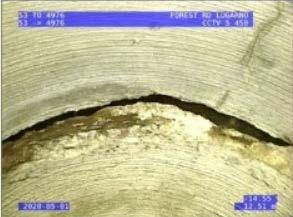


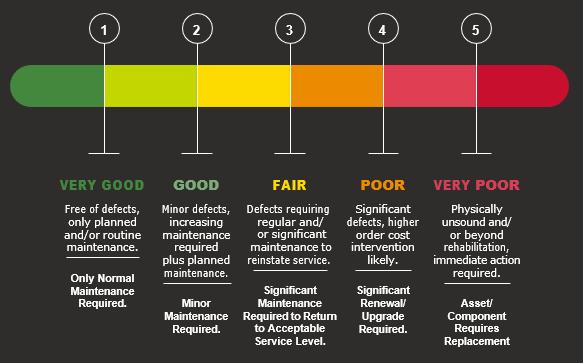
Council has adopted a condition assessment framework based on IPWEA guidelines that is used to assess the asset network condition.
Figure 9 - Asset Condition Distribution by Asset Class Condition distribution by asset element / component by Current Replacement Cost as at 30 June 2024
Assets that do not currently meet the standards and expectations for performance with respect to the services they provide, are known to have service deficiencies. Assets with known deficiencies in service performance are detailed in Table 4.
Stormwater pipes and culverts Structures containing cracks, missing pieces of concrete, shifted joints etc. requiring patching or relining.
Open drains and channels Requiring clearing if vegetated to allow water flow or repair of cracking of batters or floors.
Table 2 - Known service performance deficiencies
Council conducts Community Satisfaction Surveys to better understand how we are perceived by our community, measure satisfaction with our leadership and delivery of services and facilities and identify issues of concern within Bayside. In 2023, 31 of the 50 service /facilities received a ‘good performance’ score, with 86% of residents at least somewhat satisfied with Council’s performance in that area. Overall, 90% of residents rated their quality of life as ‘good’ to ‘excellent’. 91% of residents think ‘support for vulnerable community members’ is a priority, followed by sports and recreational facilities (82%), playground (81%) and youth services (81%). Library Services (68%) Local community centres and halls (67%) and public art and cultural development (57%) were considered a lower priority. The graph below shows the satisfaction with Council’s overall performance measured in 2019 and 2023.
Street cleaning
Stormwater Drainage
Management of coastline/beaches
Preservation of natural areas
Community satisfaction with climate change preparedness
Environmental awareness/education
Community perception of public safety
The survey indicates that there has been a slight increase in satisfaction with stormwater drainage services This shows that Council is making progress and improving customer satisfaction levels despite the increased frequency of extreme weather events and storms during the survey period.
A service centric approach starts with determining what services are needed and aligning assets to those services. At Bayside Council, assets need to be located in the most appropriate locations for future community use, they are functionally adequate for future demographics and consider demand and Council’s vision. This approach also prioritises capital and maintenance spending based on service criticality and considers repurposing or relocating services to manage budgets effectively.
Council ’s Local Strategic Planning Statement (LSPS), outlines a vision for Bayside’s growth through 2036, focusing on community and social infrastructure. To support this growth, high quality, flexible, and well-located open spaces, recreation, and community facilities are essential for a healthy, active, and vibrant community. The LSPS guides Council’s planning and decision making on community infrastructure, prioritising projects based on community need, available funding, and emerging opportunities. Bayside is committed to providing accessible and sustainable social infrastructure to foster a connected and resilient community.
The levels of service considered by Council have been documented considering the expectations of Council’s customers Levels of service can change over time with demand and demographics, so Council will continually review and update these as required in future AMP iterations.
The levels of service defined are intended to:
Inform community and Council of the proposed type and level of service to be offered,
Enable community and Council to assess suitability, affordability and equity of the services offered,
Measure the effectiveness of the services provided by Council,
Identify the costs and benefits of the services offered.
Council’s defined levels of service that have been adopted as a result of this AMP, are tabulated in the table below as follows:
Community Level of Service (CLoS): Driven by deliberative Community engagement,
Technical Levels of Service (TLoS): Driven by Strategic analysis, intervention levels, balancing cost, risk and performance against future community outcomes.
CLoS Indicator Measurement
Safety (Risk) Provide safe and functioning stormwater drainage assets.
Drainage assets are routinely inspected for hazards and risk
<1% assets with high or very high-risk rating
> 80% community satisfaction of stormwater management
Council undertakes routine inspection of drainage assets to inform the 10 year renewal program
To be determined 68%
Council engaged Vapar Solutions to use AI to review CCTV footage for 8 kms of stormwater pipes as a preliminary investigation. There is scope to review additional CCTV footage once the effectiveness of the AI inspection method has been demonstrated.
Quality Performance in providing / maintaining stormwater drainage facilities.
Protect the quality of receiving waters.
Protect the quality of receiving waters.
<1,000 requests per year for maintenance and new infrastructure
Installation of GPT’s as appropriate at strategic locations across Bayside
Volume of waste prevented from entering the receiving waterways (volume of waste removed from GPTs and waterways per annum).
979
As of 2024 the current amount of GPT’s installed across Bayside is 75
Environment & Resilience to determine.
Protect the quality of receiving waters.
Responsiveness Response time to customer ‘Stormwater Drainage’ requests.
Climate Adaptation
Mitigate the impacts of climate change on the community
A commitment to continually improve environmental efficiencies, and promote sustainability
Volume of waste prevented from entering receiving waterways (volume waste removed by streetsweepers pa).
Environment & Resilience to determine.
> 80% of all requests adequately responded to within target. 84%
Mitigate the impacts of climate change on the community by applying development controls that address flooding considering climate change.
Reduction in water consumption by using grey water / harvested water where possible.
Environment & Resilience are developing a Climate Change Policy. When this is delivered Council’s DCP will be updated to include the changes
TBC
** NB: Climate Adaptation Strategies may need to be incorporated into next iteration of the AMP
Table 3 - AMP Levels of Service
To ensure that Community Levels of Service are achieved, the Technical Levels of Service describe Council’s Decision Logic to allocate maintenance or capital actions (including new and upgrades).
Council has listed guidelines containing this decision logic within its Enterprise Asset System It details the following:
1. The task or work expected to be undertaken, eg repair broken stormwater pipe;
2. The schedule of inspections to be undertaken of specified matters at specified intervals;
3. The circumstances under which intervention action is to be taken with respect to repair or maintenance /capital;
4. The priority to be given to assets and associated intervention level;
5. The type of priority intervention action that will be carried out;
6. Provision, as far as practicable, for the unpredictable, ie emergencies, natural disasters; and
7. Cost rates required to deliver the specified maintenance and capital works.
Responsibility for immediate dangerous situations with respect to its assets, is initially assessed or undertaken by Councils operational staff or the after-hours response team.
This AMP acknowledges the importance of understanding and monitoring the linkage between workload indicators and intervention actions, as a substantial increase in area to be maintained can materially impact upon intervention action (and community satisfaction and duty of care requirements) if not accompanied by a comparable increase in budget allocation or productivity improvement.
Given the outcomes of an internal deliberation with respect to Council’s maintenance and capital works, the Levels of Service as detailed in this Asset Management Plan above are considered reasonable and meet community expectations in the context of responsible asset management

This section identifies the anticipated effect of expected growth and consequent demand on Council’s stormwater drainage assets. Forecasting future demand is essential in determining lifecycle management for assets. The management of stormwater drainage assets is directly affected both by growth in the number of assets and growth in the resident population as well as visiting populations.
Drivers affecting asset demand, include factors such as population change, changes in demographics, technological changes and environmental changes. In the absence of comprehensive service strategies, population trends can be used as a guide to ascertain future demand.
It is envisaged that over the next 10 years, there will be significant population growth across Bayside, with a projected change of 25% 1, growing at over 2% per year. The areas projected to have the largest increases in new dwellings include Rockdale, Arncliffe, Wolli Creek, Mascot, and Eastlakes. The
heightened demand for services will increase proportionally with the predicted population growth and utilisation of the surrounding stormwater Infrastructure assets.
Census data highlights a growing and more diverse population. Meeting the recreational needs of this community requires flexible spaces that encourage shared use, social interaction, and minimise conflict. New transport links, revitalised commercial areas, and the upgrade of the Botany Aquatics facility will draw both people and businesses to the region
Demand factor trends and impacts on service delivery over the following 10 years are in Table 6.
Increase of population and population density at a rate of approximately 0.6% per annum over the following 5 years.
Increased utilisation of stormwater drainage assets will be expected, proportional to population growth. This can be mitigated by ensuring development applications comply with Council’s stormwater discharge requirements and standards.
Increase in demand to upgrade localised areas that flood (where feasible).
Climate change will see an increased risk of extreme weather events including storm events, heatwave, flooding, sea level rise and fire events.
Changing property owner habits.
As a result of house extensions, renovations, building of new and/or bigger garages and covered outdoor entertaining areas, permeable surface areas have decreased which in turn has increased the amount of stormwater runoff, generated by each property.
Capital /Maintenance Works:
Asset growth
Increased age of these assets
Increased community expectation of accountability of asset maintenance and quality of network
Remaining useful life of existing infrastructure
Premature failure of some donated assets
Changing weather patterns will place more demand on Council's stormwater assets
Flood mitigation measures will be identified to address increased severity of flooding, due to climate change (where feasible).
Increased demand for stormwater drainage assets and water quality treatment devices.
Pressure to upgrade Council’s Infrastructure networks
Increasing demand on Council’s resources to rehabilitate and renew ageing infrastructure.
Council is continuously monitoring new asset treatments that may be available to increase the life of its assets. Table 7 details technology changes that are forecasted to affect the delivery of services covered by this plan.
Improvement in techniques and materials
Asset Information System
Changes in methodology, longer life materials and better rehabilitation techniques enable assets to be maintained and managed more cost effectively, with a potentially longer useful life.
Improved information systems for mapping, recording information and managing assets. Adjustment of the inspection regime to match the amount of public usage and fatigue impact on assets
Table 5 - Changes in Technology and Forecast on Service Delivery
These technological factors need to be assessed in determining the scoping requirements for maintenance works, renewal, upgrade and new parks and sporting grounds projects. There will be changes to asset management technology, in particular the monitoring and data collection roles. These upgrades in technology may require consideration of modifications to service levels as and when appropriate.
Table 8 details Council’s has the following potential climate change impacts and their responses to them with respect to their stormwater drainage portfolio.
Table 6 - Climate change impacts
Climate Impact Climate Change impact on service Councils Response
Increase in extreme weather events
Irregular rainfall /drought
(Often in coinciding with the El Niño climate cycle)
Increased rainfall
Climate change will see an increased risk of extreme weather events including storm events, heatwave, flooding, sea level rise, and fire events.
Risk of sea level rise and/or flooding will increase deterioration and reduce serviceability.
A drier climate is anticipated over the long-term.
Climate risk assessment will determine the impact on asset useful lives.
Investigate flood mitigation strategies.
Stormwater upgrades may assist in mitigating the impacts of increased rainfall intensity due to climate change.
Include increased cost of water in the operations budget.
Include water harvesting & water storage infrastructure as optional extras when considering future capital renewal works.
Increasing rainfall intensity will increase demand resulting in a need to upgrade pipe capacity.
Sea level rise
Higher sea levels at stormwater outlets will reduce the ability for the stormwater network to discharge
Identify areas which will benefit from a pipe capacity upgrade during the completion of floodplain risk management studies and plans.
Apply development controls to protect new developments from the impacts of climate change on flooding.
Identifying areas which will benefit from flood gates or stormwater drainage asset upgrades.
The drainage network is well-established within Bayside, and there are limited opportunities available to construct new assets. Council does not envisage acquiring substantial lengths of new stormwater assets from developers in the near future. However, there may be occasions where a developer will need to construct new pipes and pits (and dedicate these to Council) to ensure that their development is connected to the nearest underground stormwater discharge point, as opposed to allowing increased stormwater flows to discharge directly to the roadway.
It is important to note that when new assets are acquired, or assets are expanded or upgraded, this results in an increase in commitment of annual operational and maintenance funding to ensure continued service delivery of the asset over its lifecycle.
Demand on Council’s stormwater assets will increase proportionally with the predicted population growth and predicted demographic changes. Demand will also increase due to increased rainfall intensity as a result of climate change. Demand for new services will be managed through a combination of managing existing assets, upgrading existing assets and providing new assets to meet demand and demand management.
Demand management practices include non-asset solutions, insuring against risks and managing failures. Opportunities identified to date for demand management are shown in Table 8. Further opportunities will be developed in future revisions of this AMP.
Increased demand on stormwater drainage assets will be expected, proportional to population growth.
Increased population density will result in increased demand on stormwater drainage assets due to an increase in pervious surfaces.
Increased need for maintenance and renewal costs
Fund priority works. Continue to seek grant funding for identified projects.
Continue to analyse and improve understanding of the cost of providing services and the capacity to fund at the current level of service.
Undertake strategic planning to identify the change in service demand, identify areas which require increased capacity to meet demand or other flood mitigation works to manage risk.
Service Planning is used to identify the best mix of provision and development to provide the best possible services at a sustainable level, which can include some shifts in service levels, both up and down across Bayside
Review and document levels of services after consultation with the Service Managers and the community.
Incorporate total asset lifecycle costings into asset management.
Monitor community expectations and communicate service levels and financial capacity with the community to balance priorities for infrastructure with what the community is prepared to pay for.
Community awareness
Partnerships
There will be an increase in structural damage caused by extreme events.
Climate risk assessment will determine the impact on asset useful lives.
Inclusion of information brochures with other correspondence provided to the community, such as rates notices, or the website.
Funding from DCCEEW to fund flood studies and flood mitigation works.
Working with agencies such as Sydney Water and TfNSW when Council stormwater assets connect into other agency networks.
Develop a Council specific Climate Change Adaption Toolkit.
Include environmental policies and considerations in public space planning and capital works.
Utilise Government environmental subsidy and funding programs.
Monitor developments and potential impacts on asset management.
Identify opportunities for water harvesting and recycling for irrigation purposes.
Table 7 - Demand Management Plan Summary
This section of the AMP identifies the processes required to effectively manage, maintain, renew, and upgrade Council’s stormwater drainage assets.
Over time, minor faults can occur within the stormwater drainage asset portfolio. Council addresses the repairs and maintenance of these faults (ie jetting stormwater pipes to clear debris and removing of roots which have infiltrated the pipes) based on defined technical levels of service - intervention levels and response times. Maintenance is scheduled as soon as the asset reaches this point.
Operations and maintenance activities do not improve the condition of the stormwater drainage assets but rather enable the asset to deliver its expected service levels as related to its function.
Technical Levels of Service are currently documented in Council’s maintenance management system. Council considers that these current operations and maintenance service levels meet the community’s needs and expectations.
Renewal expenditure is major work which does not increase the asset’s design capacity, but restores, rehabilitates, replaces, or renews an existing asset to its original service potential. Work over and above restoring an asset to original service potential is upgrade /expansion or new works expenditure. Capital renewal includes works such as replacement of collapsed sections of pipe, repairing cracking and replacement of broken components.
Council’s forward renewal plan is based on the most recent strategic visual condition assessments undertaken periodically which has identified assets which have reached an unacceptable level of services requiring intervention based on Council’s Technical Service Level. The capital renewal projects planning approach and development of capital projects is determined using the capital project ranking criteria outlined below.
Table 8 - Capital Renewal Project Priority Ranking Criteria
Stormwater Drainage asset upgrades are usually undertaken where the asset has been identified as deficient with regards to providing its intended function, such as being ‘fit for use’ and ‘fit for purpose.’ Council assesses the asset’s capability of catering for the current and near future user numbers and assesses the asset’s ability to be adapted or reconfigured to provide for changing user needs and service requirements (such as a multi-purpose playing fields in a highly utilised area to cater for various sports and age demographics).
Typically upgrade /expansion works are identified from a combination of methods which include floodplain risk management studies; Councillor and/or community requests; project candidates identified via Strategic Plans, Master Plans or Studies and /or safety audits. The built nature of new, upgrade, and renewed drainage assets will always be provided in accordance with Council’s design standards, relevant Australian Standards, industry guidelines and best practices
New works are those works that create a new asset that did not previously exist. Council can acquire existing built assets or new assets from developers and government agencies, or new assets via capital projects to meet community needs. Typically, new asset candidates are identified from a combination of methods which include Councillor and/or community requests or identified via Strategic Plans, Master Plans, Plans of Management or Studies to cater for growth and population demographic shifts and/or from safety audits.
Disposal includes any activity associated with disposal of a decommissioned asset including sale, demolition, relocation, or transfer of ownership.
Council’s Risk Management Policy sets the framework for addressing risk in the context of International Standard ISO31000-2018, Risk Management Principles and Guidelines. Risk Management is defined here as ‘coordinated activities to direct and control with regard to risk’. The Policy outlines Council’s commitment to manage its resources and responsibilities in a manner which is intended to minimise harm or loss. The elements of this framework are illustrated in Figure 18.
Figure 10 - Risk Management Process, Source: ISO31000:2018

The Intergovernmental Panel on Climate Change (IPCC) Special Report on Global Warming of 1.5°C, (2018), highlighted the dire consequences we face if we fail to limit the global temperature increase to 1.5°C, as shown in the figure below. Considering the current impacts that we are experiencing at around a 1.2°C rise in average temperature, it is essential that Council ensure climate adaptation and mitigation strategies are incorporated into Asset Management Planning.
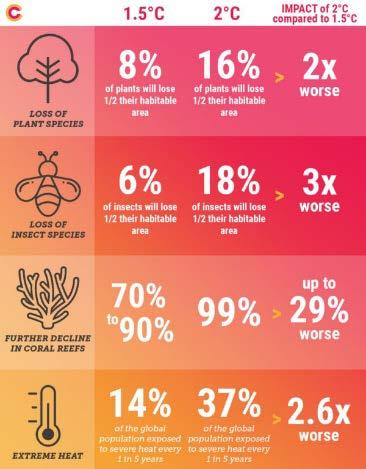
Whilst Climate Adaptation Strategies will be incorporated in the next iteration of this AMP it is worth noting the significant amount of work undertaken by Bayside Council in this a space. Council has commenced work on developing a climate change management guide and how to mitigate its impacts
Publications include:
1. Botany Bay Council's Sea Level Rise Policy;
2. Coastal Erosion Studies: Sea level rise studies commissioned by Council show that developments within Botany Bay have contributed to coastal erosion;
3. Bayside Environment and Resilience Plan 2032;
4. Various Urban Heat Island Effect mitigation studies. Bayside Council is reviewing its plans as well as working with local and regional stakeholders to increase green city spaces for a more comfortable place to live and work.
How climate change impacts stormwater drainage assets will vary, as will the way in which Council manages those impacts depending on the asset category and the type of services affected.
As a minimum Council needs to consider future trends associated with climate change, how these trends could affect existing assets and services and how to plan and manage potential climate change impacts moving forward. Risk and opportunities identified to date are shown in Table 11.
New Asset Description Climate Change impact Asset Resilience Response to Climate Change
New Stormwater Drainage Assets
Increased risk of damage and impact to services due to extreme weather events.
Working towards up-to-date flood modelling to support emergency management responses, land development and future capital works programs
New assets Increased risk of drought Water harvesting and water storage infrastructure to reduce the dependency on potable water supply for watering gardens, irrigation etc.
New Assets Increased rainfall intensity
New assets Sea Level Rise
New assets will need to consider changes in weather behaviour and rainfall patterns including increases in rainfall intensity.
Design of new stormwater assets will need to address sea level rise.
Table 9 - Stormwater Drainage Asset Resilience to Climate Change
The provision of adequate financial resources ensures that Council’s stormwater drainage assets are appropriately managed and preserved. Financial provisions below requirements impact directly on community development and if prolonged, results in substantial needs for ‘catch up ’ expenditure imposed on the community in the future. Additionally, deferred renewal results in increased and escalating reactive maintenance as aged assets deteriorate at increasing rates.
To ensure responsible and sustainable stewardship of our stormwater assets, we are committed to balancing our community’s needs and aspirations with what is affordable for ratepayers.
Making decisions about funding our assets requires ongoing balancing of service levels, risk and the need to adequately maintain and renew assets. Our aim is to achieve long-term asset sustainability
To ensure the resources needed to manage our assets are provided integration of the Asset Management Strategy and the Long-Term Financial Plan (LTFP) is critical
The balance between maintaining and renewing our assets and accommodating funding for improvement and growth is a constant challenge - underfunding the renewal of an asset can lead to lower levels of service and deferring an important asset upgrade can mean that the asset is no longer ‘fit-for-purpose.’
This AMP has considered a minimum of three options, linked to Community Levels of Service. The adopted expenditure included in this AMP is consistent with our affordability after considering at least three scenarios.
All funding requirements identified for each asset portfolio have been allocated in the LTFP This will require future monitoring and further analysis as new asset information becomes available such as updated asset condition data. Funding requirements may potentially change which will require adjustment to the and the LTFP
Key financial assumptions made in the investment analysis are:
Forecast expenditure 2025 to 2029 for Acquisitions and Renewals taken from current Capital Projects Program (CPP). The CPP is a list of Council acquisition and capital renewal projects with approved funding that are scheduled to proceed between 2025 and 2029
Forecast expenditure 2030 to 2035 for Acquisitions is extrapolated based on forecast trend for the CPP
Forecast expenditure 2025 to 2035 for Operations and Maintenance is based on data from Bayside Council ‘Special Schedule No.7’ which reports Operation and Maintenance expenditure on infrastructure assets. Figures used for both Operation and Maintenance costs are the annual amount charged for Stormwater Assets for the Financial Year 2023 /24.
Disposal expenditure based on current CPP data and planned divestment of assets. As other stormwater assets reach end of life, Council will make decisions on whether these assets are renewed, replaced, or divested.
At Bayside Council, Financial Reserves are established to set aside funds for Council to allocate to specific projects, as required. The main reserve that provides Capital Renewal funding for stormwater drainage assets is the Stormwater Levy Reserve. The Stormwater Levy Reserve is raised on all properties in Bayside and is allocated to stormwater and flood mitigation projects.
This Asset Plan balances available funding between Operational /Maintenance, Renewal, Upgrade and New to ensure that available funding is allocated for the best long-term outcome (the condition of our stormwater assets). Using life cycle-based modelling, the Asset Plan has considered multiple iterations and simulations. Each simulation considers intervention levels (technical service levels) and the cost of delivering these service levels, should Council choose to adopt them.
The 10 year funding considered sufficient to enable the stormwater drainage asset portfolio to achieve its intended level of service through capital and maintenance activities is as follows:
Table 10 - Desired 10 yea r Funding Strategy
There are several studies and investigations being undertaken which may identify additional funding needs to acquire new and upgrade existing assets to meet required service levels, over the following 10 years.
Council acknowledges that additional work is required to improve its understanding of the future new and upgrade funding requirements, and this has been identified as an improvement item in this AMP.
Renewal Expenditure based on 2024 planned funding allocation projected over 10 years
New & Upgrade Expenditure based on 2024 planned funding allocation projected o over 10 years
Maintenance and Operational Expenditure based on 2024 planned funding allocation projected over 10 years
This section outlines how Council will measure its asset management performance. The identified action will enable Council to improve its asset management capability, to enhance asset value and deliver more for stakeholders while balancing cost, risk and performance.
The key assumptions made in this AMP and risks that these may change are shown below.
Key Assumption
Stormwater asset conditions reflect the assets' current condition as at 2024.
The allocation of renewal funds has been based on the asset replacement costs developed as part of past valuations.
Current maintenance funding levels are considered adequate.
The funding needs for new and/or upgrade assets will be identified via studies and masterplans and funding sought from grants and/or developer contributions. As identified, these will be incorporated into future AMP revisions.
Capital renewal treatments are like for like and do not account for additional costs to upgrade and/or utilise modern technologies and materials.
Current Levels of Service are considered appropriate and meet community needs.
Medium to High due to 2% sample data
Medium -financials / engineering rates have been peer reviewed
Medium
Medium
Medium to Low
Medium
Existing inspection and maintenance contracts will not change. Medium Asset register currency pertaining to asset quantities.
Network strategic condition inspections will be funded on a 3-4 year cyclic basis and incorporated into the Operational budget.
High
Low
Current human resource plan will not change in the near future. Low
Table 11 - Key Assumptions made in AMP and Risks of Change
The Stormwater AMP has a planning horizon of 10 years, and it is based on details documented within the Asset Management Strategy. The AMP will be reviewed and updated in the year following Council Local Government elections.
This Stormwater AMP will be reviewed and amended to recognise any changes in service levels, needs arising from strategies, studies, master plans and/or resources available to provide those services as a result of the budget decision process.
The effectiveness of this AMP will be measured and monitored on the basis of annual strategic Council indicators as follows:
The performance of Council achievement against the Levels of Service documented in this AMP.
Performance against the Council’s ratios ie Asset Renewals Ratio, and Asset Consumption Ratio measured against recommended IPWEA guidelines.
Performance of Asset health - currently measured at 4 year condition assessment cycles and measured against the funding scenario in the adopted plan.
The Asset Management Improvement Plan set out in Table 14 below details key improvement tasks. Completion of these tasks will improve Council’s asset management capabilities for stormwater assets
1 Develop a Stormwater responsibility matrix with a view to identify and streamline roles and responsibilities.
2 Incorporate infrastructure resilience and climate change mitigation strategies in future iterations of this asset management plan following adoption of future policy
3 Develop and implement an asset handover process to enable 100% asset data capture of new assets gifted or constructed by others and those renewed, to be captured in Council’s asset register on an annual basis.
4 Plan, schedule and seek funding for network wide condition assessments on a 3-5 yearly cycle, commencing in 2025 to coincide with Council’s revaluation requirements. This action supports the need for increased CCTV inspection of stormwater drainage assets.
5 Conduct an internal review of asset information, how and where it is housed and updated to ensure the most accurate information is utilised and maintained.
City Infrastructure December 2026
City Infrastructure December 2026
City Infrastructure, Property, City Projects, City Works Completed December 2024
City Infrastructure December 2026
City Infrastructure Ongoing
6 Develop climate adaptation and reporting Environment & Resilience December 2025
7 Develop an overarching evaluation process to review the performance and improvements of Council’s infrastructure asset classes as outlined in the Asset Management Plans
Table 12 - Improvement Actions
City Infrastructure Ongoing
Key Terms
Asset Health
Capital Expenditure
Condition or Service State
Consumption Ratio
Asset Health refers to the remaining service life aggregated by individual components for the entire asset
Expenditure for new infrastructure and for the renewal or upgrade of existing assets that enhances the service potential of the assets.
The service state involves the use of a single integer between 1 and 5 to describe the ability of the asset in question to fulfill its function; where 1 is very good and 5 is very poor.
Written down Value of an asset / Gross Replacement costs measured using the remaining life of an asset or its component. Recommended target = 60 - 85%.
Financial Ratios Reporting ratios in Financial Statements - Renewal funding ratio, Life Cycle Indicator and Consumption Ratio.
IIMM International Infrastructure Management Manual
Infrastructure Assets Stationary systems forming a network and serving whole communities where the system as a whole is intended to be maintained indefinitely by continuing replacement and refurbishment of its components, eg, roads, facilities, footpaths, drains, parks.
Intervention Level
The physical state of an asset is defined by its condition, capacity or functionality at which Council will determine a capital or maintenance action on an asset.
ISO55000 55000 Series, International Suite of Asset Management Standards
LATM Local Area Traffic Management Devices
Lifecycle Indicator Planned 10 year LTFP / Desired 10 year LTFP costs (maintenance, renewal, upgrade, and new expenditure for desired service level). Recommended target = 85 - 115%.
Operations / Maintenance Expenditure that is incurred to ensure that the asset continues to provide its predetermined service capacity and quality and achieves its expected useful life. Maintenance expenditure is of a regular and ongoing nature.
Renewal Funding Ratio
Service Centric Approach
Planned renewal budget for the next 10 years / Desired renewal costs for the next 10 years (as per the desired service level). Recommended target = 85 - 115%.
An approach where the characteristics, locations, condition, and functional fitness of future assets are defined by the services that Council intends to provide and the levels at which these services are targeted.

Online
Email: council@bayside.nsw.gov.au
Website: www.bayside.nsw.gov.au
Phone
1300 581 299 or +61 2 9562 1666
Visit our Customer Service Centres
Monday to Friday 8:30 am – 4:30 pm
Rockdale Library, 444-446 Princes Highway, Rockdale Westfield Eastgardens, 152 Bunnerong Road, Eastgardens
Post
Bayside Council PO Box 21
Rockdale NSW 2216